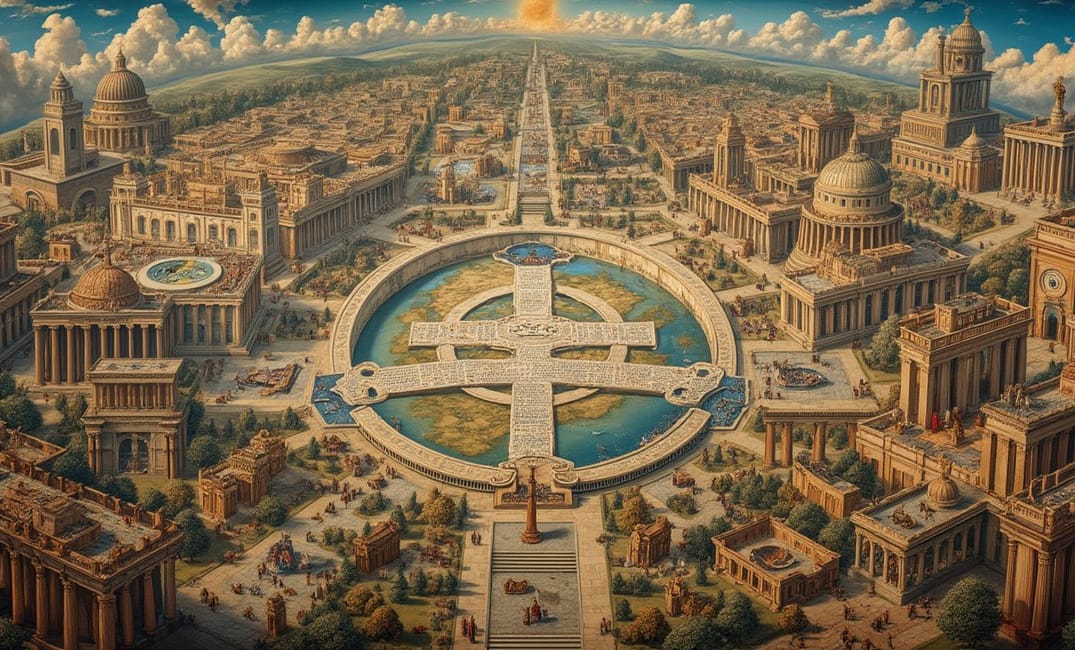Introduction: A Journey Through Human Milestones
In the vast tapestry of human history, certain milestones shine brightly through the ages, marking significant leaps in art, science, and society. These milestones are the peaks of human ingenuity, collective effort, and profound change. They echo through time, not only as grand moments but as indispensable building blocks of what humanity has achieved and what it might yet attain. Today, let us delve into these milestones, celebrating humanity's triumphs and contemplating the forces that have shaped our journey through the cosmos.
Prehistoric Foundations: The Dawn of Human Achievement
Early human histories etched four cardinal milestones into being: communication, communal living, technological innovation, and environmental mastery.
The Birth of Language and Communication
- Emergence of Spoken Language: The development of language represents one of humanity's earliest milestones, heralding a remarkable transition from simple gestures to complex verbal communication. This newfound ability to convey detailed information enriched communal ties, enabled sophisticated planning, and laid the groundwork for cultural and societal structures.
- Symbolic Representation and the Written Word: The advent of symbolic representation and the eventual development of writing systems transformed human cognition and social organization. Writing permitted the preservation and dissemination of ideas across generations, facilitating more cohesive and sophisticated societies.
Community and Collaboration
- Rise of Social Structures: Gatherer-hunters' transition into stable communities introduced the fundamentals of societal structures. As societies grew, established norms, and improved resource management ensured survival and prosperity.
- Collective Problem Solving: Human collaboration in problem-solving signified an evolution in strategic thinking and the pooling of resources. Leveraging collective knowledge and skills amplified innovation and effectiveness in tackling challenges.
Antiquity and Classical Civilization: Achievements in Art and Science
Antiquity's legacy features profound artistic expressions and groundbreaking scientific principles that laid the bedrock for future civilizations.
Artistic Flourishment in Classical Eras
- Greek Classical Art: The golden age of ancient Greece fostered monumental milestones, with artworks reflecting aesthetic brilliance and philosophical inquiry. The Parthenon and sculptures like the Venus de Milo symbolize an enduring quest for harmony, beauty, and humanism.
- Roman Architectural Innovations: Roman architectural feats, from aqueducts to amphitheaters, showcased advanced engineering skills that transformed civic life. Designs drew inspiration from past cultures yet integrated novel concepts of utility and durability.
Scientific Advances and Philosophical Insights
- Pythagorean Mathematics and Euclidean Geometry: The development of mathematical principles during classical times formed the analytical tools supporting future technological advances. Pythagoras and Euclid’s contributions provided rigorous frameworks that underpinned scientific progress.
- Philosophical Dialogues and Discoveries: Philosophers such as Plato and Aristotle ignited inquiries into ethics, politics, metaphysics, and natural sciences. These multifaceted discussions emphasized critical reasoning and empirical observation, shaping intellectual traditions that persisted through ages.
The Middle Ages to the Renaissance: Cultural Reawakening and Scientific Revolution
The Middle Ages and Renaissance eras marked pivotal moments of cultural vibrancy and scientific reawakening, characterized by religious, intellectual, and artistic exploration.
Cultural Revival and Artistic Innovation
- Byzantine Mosaics to Gothic Cathedrals: The Middle Ages experienced rich religious and artistic expression, epitomized by Byzantine mosaics and Gothic cathedrals like Chartres. These monumental works integrated spiritual fervor with artistic grandeur, reflecting introspective devotion and cultural identity.
- Renaissance Humanism and Masterpieces: The Renaissance heralded a revival of classical learning and humanism, exemplified by luminaries like Leonardo da Vinci and Michelangelo. Masterpieces like the Sistine Chapel and the Vitruvian Man merged artistry with scientific observation, celebrating the human condition as a focal point of exploration.
Scientific Curiosity Leading to Revolutionary Thought
- The Scientific Method and Empiricism: Scholars like Francis Bacon and Galileo Galilei spearheaded the scientific revolution with the development of empirical methodologies and experimentation. This critical shift toward observation and rationality laid the groundwork for modern science.
- Copernican Heliocentrism and Newtonian Physics: Copernicus challenged geocentric paradigms, proposing heliocentrism—a watershed moment in astronomical understanding. Newton's Laws of Motion and Universal Gravitation further cemented a mechanistic understanding of the natural world, fostering advances across scientific frontiers.
The Age of Enlightenment and the Industrial Revolution: Progress and Invention
Enlightenment ideals and industrial prowess combined to ignite transformative changes in philosophy, socio-political landscapes, and technological innovation.
Enlightenment and Evolving Worldviews
- Rational Inquiry and Social Dynamism: Enlightenment thinkers like Voltaire and Kant championed reason, individual freedoms, and social contracts, advocating reforms that questioned traditional authority. These philosophies reverberated around the world, influencing governance, education, and human rights principles.
- Scientific and Technological Research: Advances in medicine, astronomy, and natural sciences accelerated during this era. Breakthroughs, such as Antoine Lavoisier’s chemical principles and Edward Jenner’s smallpox vaccine, catalyzed paradigmatic shifts in scientific understanding.
Industrial Revolution: Engineering a New World
- Mechanized Production and Societal Impact: The mechanization of textiles, metallurgy, and steam engines inaugurated an era of mass production and economic shift toward industrialization. This milestone reshaped societies, prompting urbanization and altering socio-economic structures.
- Transportation and Communication Innovations: The Industrial Revolution birthed transformative transport and communication technologies, such as the steam locomotive and telegraph, facilitating global connectivity and by extension, cultural and commercial interchange.
Modern and Contemporary Epochs: Unprecedented Changes and Future Prospects
In recent epochs, technological and societal milestones mirrored humanity's rapid adaptation and collaborative ambitions for the collective future.
20th Century Scientific Breakthroughs
- Quantum Physics and the Theory of Relativity: Scientists such as Albert Einstein and Niels Bohr redefined fundamental understandings of reality with quantum mechanics and relativity, reshaping modern physics and influencing future technological innovations.
- Space Exploration and Human Aspiration: The Space Race exemplified a landmark achievement by landing humans on the Moon. Exploration continues with advances like the International Space Station and Mars rovers, reinforcing humanity's ambition to traverse interplanetary frontiers.
21st Century and the Future
- The Digital Revolution and Information Age: The proliferation of digital technologies, including the internet, computing power, and artificial intelligence, reconfigure how societies operate, communicate, and innovate, enabling global interconnectedness and vast information landscapes.
- Sustainability and Global Cooperation: Achievements in renewable energy, environmental conservation, and international collaborations like the Paris Agreement highlight humanity’s commitment to sustainable development and ecological stewardship, vital for future generations.
Celebrating Humanity's Milestones and Looking Forward
Human milestones each shine with unique luminescence, constructing an elaborate mosaic from primal survival instincts to the venerated aspirations of far-off cosmic reaches. They underscore the shared gifts of knowledge, resilience, and creativity that bind humanity's narrative, instilling hope for future triumphs.
Unwavering Pursuit of Knowledge and Understanding
The trajectory of human progress underscores an unyielding quest for knowledge, inquiry, and discovery. By valuing shared wisdom and collaboration, humanity fosters ongoing exploration—a beacon lighting the vast expanse ahead.
Interconnected Humanity Among Cosmos
As humanity ventures beyond Earthly realms, these milestones shall guide cosmic coexistence and enable equitable endeavors. They inspire continuing dialogues uniting diverse voices and cultures into a universal concord, one that preserves a rich heritage amid the vast unknowns of space.
"Guided by legacy, illuminated by innovation, humanity traverses the celestial path, emblems of progress chronicling the everlasting journey. With eyes toward the stars and roots entwined in shared aspirations, may our milestones echo, resonantly affirming the symphony of human achievement in time's eternal symphony."
HISTORY, SOCIETY, INNOVATION, ART, TECHNOLOGY, SCIENCE, MILESTONES

